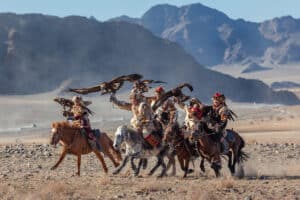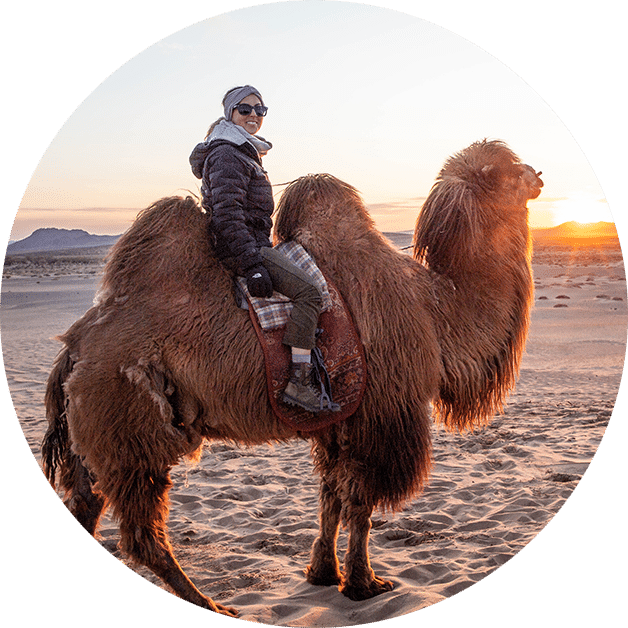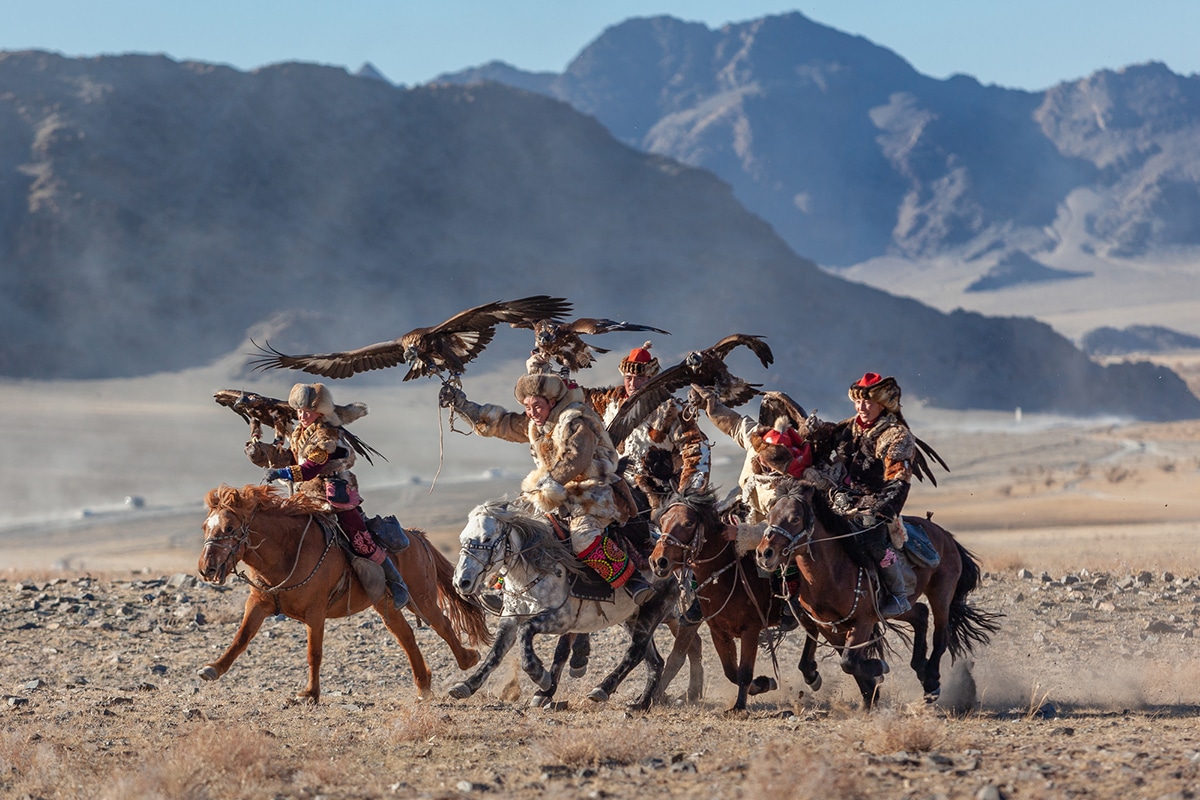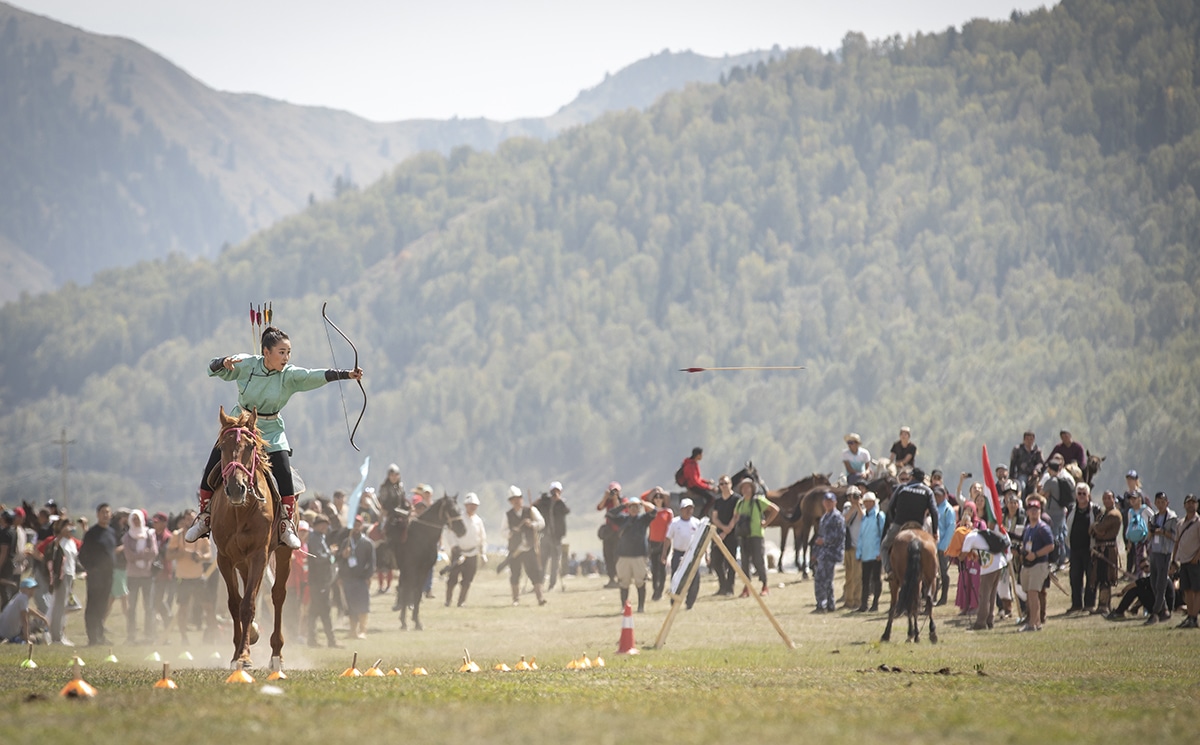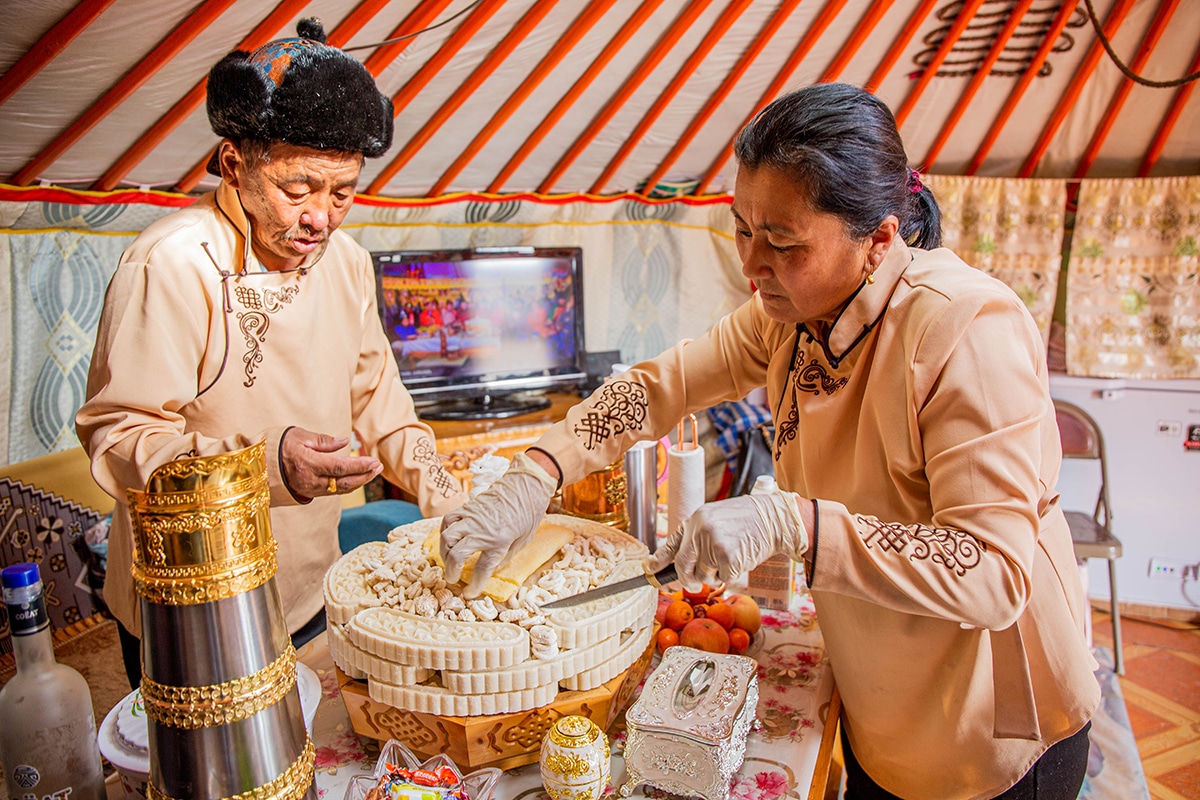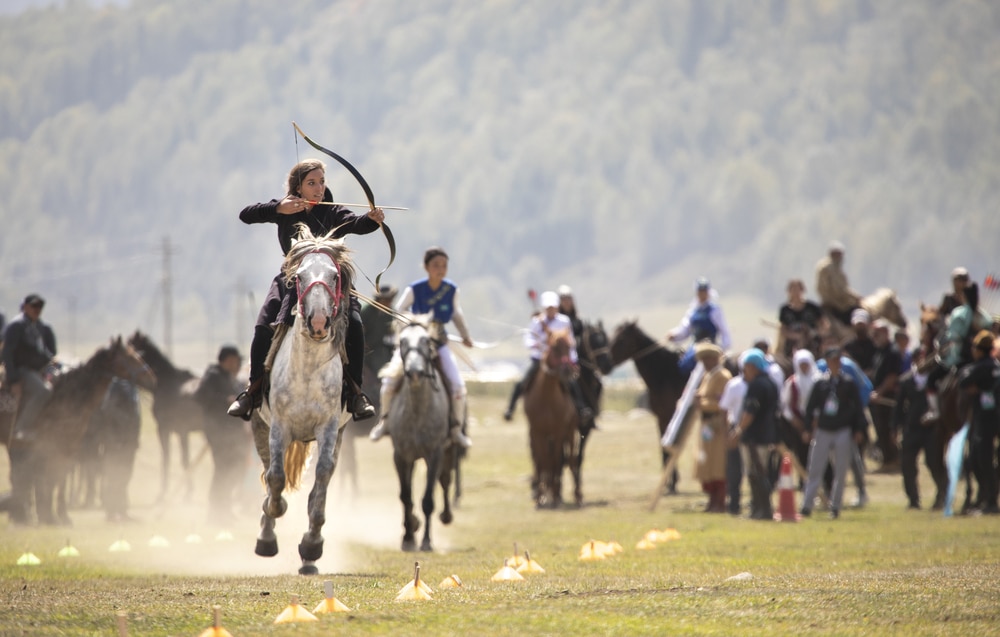What You Need to Know About Mongolian Food and Ger Culture
Mongolian food has long been misunderstood with traditional Mongolian ger and herder culture leaving little room for what may seem like finesse when it comes to Mongolia’s culinary traditions.
- June 22, 2020
Table of Contents
While that may be true to a point – just because Mongolian food is something westerners or any foreigner, doesn’t fully understand (or appreciate) – doesn’t make it any less incredible. Khokhog, tsuivan, aaruul, and airag all have a special place in Mongolian food culture, and it’s essential to learn why.
Food traditions in Mongolia date back thousands of years, even before the days of Genghis Khan. Living off the herd and the land allowed Mongolians to have a meat and dairy-heavy diet that helped them survive harsh winters and remote living conditions.
Most of the dishes and cooking methods are simple. Short preparation and cooking time is important after a long day of looking after and caring for your animals – who wants to wait for hours to eat after working outside all day? (We wouldn’t.)
Inside the Mongolian Ger: The Basics of Mongolian Food and Ger Culture Explained
When it comes to eating in Mongolia, food is a necessity and a form of substance, not necessarily something to be fused over for hours or days at a time. There is one stove in a ger, fueled by either wood or dried cow dung when wood isn’t available, which is usually the case. For herders who are more well off (maybe they own racehorses or have a large herd), a solar-powered fridge/freezer may also be inside the ger, but that’s a rare occasion.
The stove is the central part of the ger, not only used for cooking but also for heating the ger during cold winter and even summer nights. Almost everything inside a Mongolian ger serves several purposes.
Most Mongolian dishes consist of only a few ingredients. Flour and water make bread and noodles. Diary is used to make cheese, dried cheese curds, and milk tea. Meat is dried, boiled, or cooked in oil or animal fat.
It’s typical to find dried cheese curds, salty milk tea, and whatever else the family has on hand (bread, candy, soup) whenever you enter a Mongolian ger.
Ger culture and a few simple things to know:
- Always accept a bowl or plate with either both hands or only your right hand.
- It’s not uncommon for your tea bowl to become your food bowl, and then your tea bowl again.
- Eat buuz with your hands and tsuivan with either chopsticks or forks, depending on the preference of the family.
- Never accept more food than you can eat. Wasting food is bad manners and disrespectful to your host.

More Mongolian Ger Traditions Explained
First things first – let’s clear up the difference between yurt and ger. Yurt is a Russian word spread throughout the world thanks to the Soviets, and ger is the Mongolian word for “home.” Ger is the preferred term in Mongolia.
Things to know when entering a Mongolian ger:
- Don’t step on the doorframe.
- Enter to the left of the ger and sit on the left side. The right side is for family only.
- Don’t be surprised when you learn that cow dung is keeping you warm or cooking your food – it burns longer than wood (which is not easily found out here) and is a free – one might even say, sustainable – resource.
- When you enter a ger be ready to eat and drink, it’s polite for the host to offer you suultai tsai (salty milk tea), a bowl of candy, dried cheese curds, bread, homemade butter, yogurt, and whatever else they have on hand.
- Only take what you can finish when it comes to food and drink. Mongolian dishes can be heavy and full of oil and fat. Only take a small serving – you can always get more.
Mongolian Snuff Culture
This is an interesting thing to explain. Men in Mongolia like to carry around these beautiful, tiny little bottles that look something like a saltshaker. (That’s not precisely accurate, but there’s no other way to explain this accurately.)
The bottle is full of sniffing tobacco, and it’s something that usually only men have. The head of the house will offer his bottle to his guests to welcome them when you’re inside the ger.
If the guest also has a snuff bottle, the head of the ger and the guest will do an exchange of their bottles, and snort one another’s snuff together. (You can find your own snuff bottle at the Black Market, if you really want to impress your host.)
Guests unaccustomed to sniffing tobacco should pull off the bottle’s lid just enough to inhale the scent. Professionals who have been in the country awhile will pull off the top, revealing the carved sniffer and take a giant snort of the stuff, Mongolian Narcos-style.
This stuff is a doozy, and with the way they like to drink alcohol, and mixing in often-times greasy Mongolian food your stomach isn’t accustomed to, head our advice and take it slow on this one.
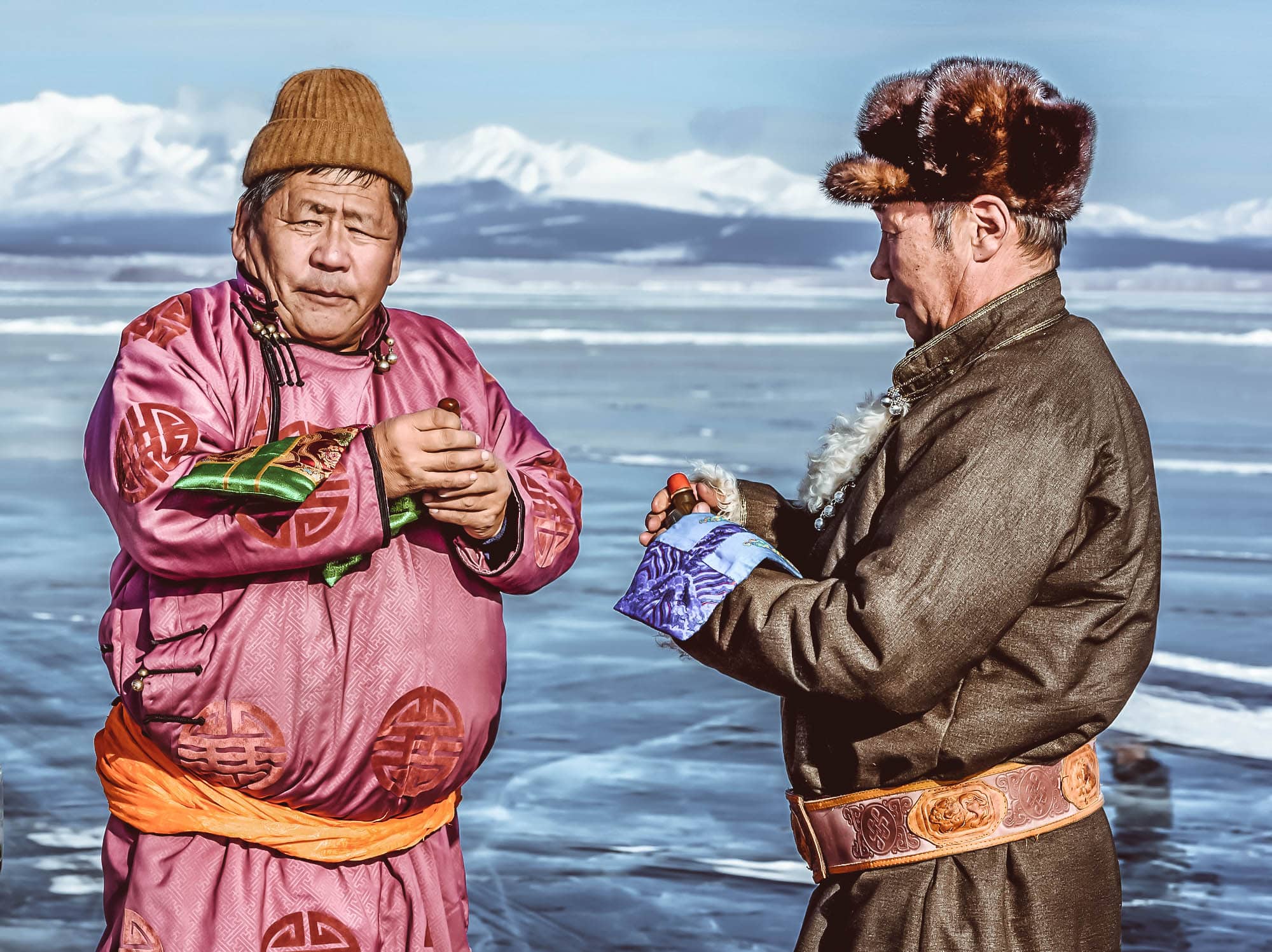
Meat, Dairy, and Mongolian Beef
Since the days of Genghis Khan, the dairy and meat-heavy diet has been the key to Mongol’s having strong bones and teeth. And with the animals living off the land, not being pumped full of hormones and ingesting chemicals, it’s pretty much as clean eating as it gets.
We can’t have an article about Mongolian food without mentioning Mongolian beef, the famous Chinese dish that well, isn’t even Mongolian at all. (Sorry to disappoint you.)
The dish was invented in Taiwan to make the Chinese beef and vegetable stir-fried dish sound more exotic.
Do Mongolians eat horse meat?
Well, yes. But not all of them. And not everywhere.
Many herders believe that horse meat is useful for treating cold and fever. And when a baby is born, they think that washing the baby in horse meat broth is good for the baby’s immunity.
That being said, it’s strictly a winter meat. Along with beef, both of which are too large to eat in one sitting. The cold weather acts as a natural refrigerator, so they can eat the meat over several days without spoiling. Mutton and goat are summer meats since they are both small enough to be eaten at once by a family.
Don’t expect to find chickens or bird on the menu. Chickens don’t particularly thrive out on the steppe.
Fish may be a treat for guests or special occasions if there’s a river or lake nearby.
Finding Vegetarian Mongolian Food
Vegetarians will undoubtedly have a hard time eating Mongolian food out in the countryside, where just about every dish revolves around meat. That’s not because Mongolians are inconsiderate of your dietary restrictions; that’s what’s available out there.
Pack yourself snacks, instant noodles, and other easy to make meals if you’re unable to eat the dishes that will be available to you.
Mongolia is going to be a hard place for you if you’re sensitive to how animals are slaughtered and prepared. It’s a way of life out in the countryside, and Mongolian food traditions such as boodog, where meat is cooked inside an animal’s skin using hot stones isn’t exactly animal-lover friendly stuff.
There are instances when you can make plans in advance to have vegetable buuz prepared or even vegetable khuushuur, but don’t expect either of these to be on hand if you turn up at a ger or guesthouse without any advanced warning.
It’s okay to politely decline food that you know you won’t eat. It’s less rude than wasting food.
Mongolians and Vodka
While bringing a bottle of Chinggis Gold vodka is always a good idea – your host will appreciate the gesture above just about anything else that you can offer – be warned that you’ll probably drink it right then, and there, all in one sitting.
The tradition of sharing a bottle of vodka is a privilege to be shared between guests and hosts. The host male of the ger will pour small shots in an ornate silver bowl, passing it around to each of his guests one by one.
Leave a tiny bit of vodka at the bottom of the bowl, and be sure to take it in one go. Accept the bowl with your right hand only, with your left hand holding your right elbow, and if you don’t drink, it’s okay to accept the cup and take a pretend sip. It isn’t polite to not accept the bowl at all, and better to accept the gesture from your host and go through the motions.
Read Next: Is Mongolia Safe?
Did Mongol warriors really drink horse blood in the days of Genghis Khan?
As far as the legends go, yes.
When water was in short supply, which is often the case across the steppe, a small cut would be made in a horse’s neck for the warrior to get nutrients and energy from the blood to keep them going on their journey, which often involved hundreds of miles in a day.
Author: Breanna Wilson
Hi! Sain uu! I’m Breanna, an American travel writer and adventurer living in Ulaanbaatar, Mongolia for more than 5 years. I’ve written for and been featured in Condé Nast Traveler, CNN, Forbes, and the New York Times, among others. Read more of my Mongolia travel articles here.
Prepare for your Trip:
Join my Private Travel Group on Facebook
Proudly Based in Ulaanbaatar, Mongolia
© 2024 Meanwhile in Mongolia


